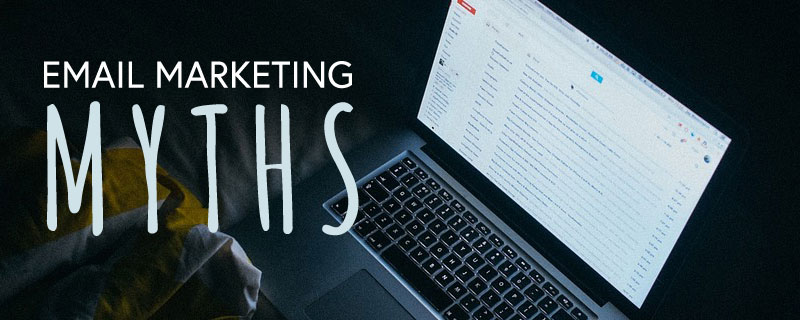BLOG
7 Email Marketing Myths & the Truth Behind Them
Email marketing has the unique ability to combine social media and content marketing together while still offering plenty of opportunities for lead generation and nurturing.
Though email marketing has been around for years, there are still plenty of myths about it that perpetuate. Here are seven email marketing myths that are undoubtedly untrue, and what you should really know about them.
Myth #1: Only young people use tablets and smartphones
This can’t possibly be true based on what the ACMA found. According to their statistics, certain percentages of tablet users have the following characteristics:
- 58 percent have a diploma or a degree
- 21 percent hold managerial positions
- 30 percent make at least $80,000 a year
Plenty of adults are starting to rely more and more on tablets and other mobile devices. This means that if your demographic involves an older age bracket, don’t assume they won’t be looking at their email on a tablet.
Myth #2: The only way an email will be successful is if the subject line is good
While having a solid subject line is a good start, your whole email marketing strategy isn’t wholly dependant on whether or not your subject lines are amazing. There are a lot of other factors that will influence whether or not a person will open and read your emails.
For instance, are your emails personalised at all? If not, then you might be missing out. Marketingsherpa’s 2012 study found that just personalising an email (including the subscriber’s name in the subject line) can raise the open rate by 17 percent.
Myth #3: A short subject line is the best subject line
Shorter subject lines aren’t always the best. Remember, you still need to be tell your subscribers what your email will even be about. For a long time, the preferred length of the subject line has been hotly debated, but now Return Path may have the answer.
According to their most recent data, the best subject lines with the highest “Read rate” (those who marked your email as read in their inboxes) fall at about 44-50 characters total. This is about the length before the subject line will cut off in the subscriber’s inbox, which means you’ve got to say your message and move on before the curtain falls.
Myth #4: Images are better than text
A picture may be worth a thousand words, but would your subscribers rather read the words or look at the picture? Litmus says in its data that 43 percent of Gmail users already read their emails without the images turned on. When you consider how popular Gmail accounts are, that’s a staggering number of people who might not be able to even see your images.
When it doubt, stick with text.
Myth #5: More emails = higher unsubscribe rate
More emails doesn’t always mean that you’ll get a higher unsubscribe rate. Alchemy Worx’s data shows that if a business were to increase its email rate from one per month to four per month, then they might see double the open rate and an 11 percent increase in revenue.
The key is to prepare your subscribers. Before you up the amount of emails you send, send out a survey and ask subscribers if they’d like to receive more emails. If a survey doesn’t work, simply inform subscribers and provide them with the chance to opt out entirely. Chances are they won’t even notice the uptick in emails.
Myth #6: Morning is the best time to send marketing emails
Morning may work for some crowds, but not for everyone. According to Mailchimp, most people are more likely to open their emails after noon, and their most active hours are between 2-5 p.m.
Of course, this is just with Mailchimp’s platform. Yours might be much different. It will all depend on their needs and schedules so make sure you do some split testing on your audiences to see what is working for them. Who knows? Maybe morning is best, but you won’t know unless you test it yourself.
Myth #7: Having a perfect reputation will ensure deliverability
Unfortunately, this is never true. Even if your emails comply with all compliance guidelines and your reputation is mainly perfect, you may not make it to your intended’s inbox. An emailer’s reputation is dependant on a lot of factors that he or she has no control over. Email marketing metrics like bounce rates, the number of emails you send out, the number of complaints you’ve received can affect your chances of hitting the subscriber’s inbox.
With these debunked myths in mind, you should also always aim to do some split testing of your own, and seeing how different best practices can be applied to your strategies.












